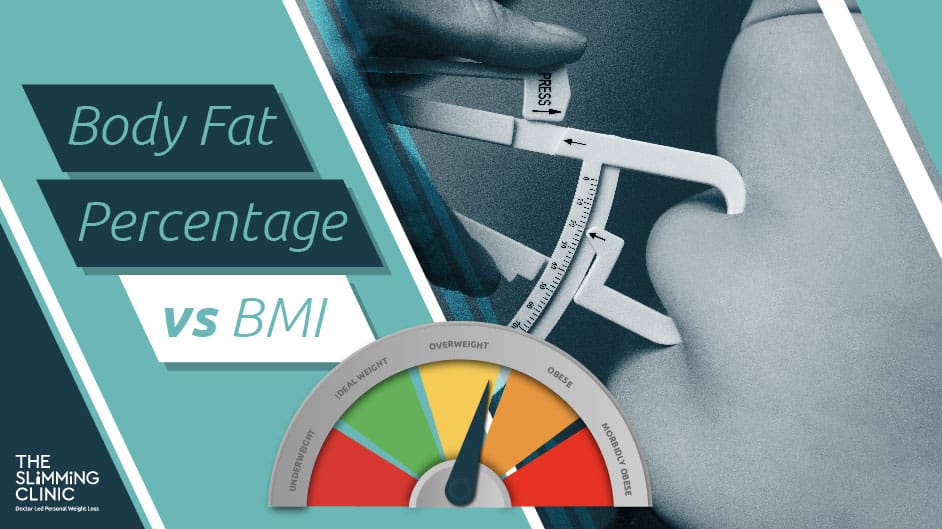Body fat percentage and body mass index (BMI) can be crucial metrics for assessing health. Understanding the differences can help individuals make more informed decisions about their health and well-being.
Body Fat: An Overview
Adipose tissue, commonly known as body fat, is more than just a storage for excess calories. It plays a crucial role in the body by producing numerous hormones such as leptin (signals of feeling full after eating), resistin (anti-inflammatory), adiponectin (increases insulin sensitivity), cytokines (pro-inflammatory), and androgens and estrogens. Fat stores energy as triglycerides in adipocytes, ready for release into circulation when needed.
However, excess fat accumulation from being overweight can lead to a condition known as adiposopathy, or “sick fat,” where fat tissue becomes inflammatory. This inflammation can result in chronic, systemic low-grade inflammation and changes in adipokine and hormone secretion, leading to metabolic disorders such as insulin resistance, type 2 diabetes (T2DM), dyslipidemia, non-alcoholic fatty liver disease (NAFLD), cancer, and stroke.
“Adiposopathy” and “sick fat” are terms used by scientists and doctors to describe how having too much body fat can lead to serious health problems. These terms help bridge the gap between research and patient care, highlighting that excess body fat is a major cause of diseases like diabetes and heart issues.
Central vs. Peripheral Fat
The effects of increased fat mass are more pronounced in patients with excess visceral fat than subcutaneous fat. Visceral fat, also known as central fat, is found deep within the abdominal cavity and surrounds important organs, including the stomach, liver, and intestines. In contrast, subcutaneous fat is just below the skin. While some levels of visceral fat are healthy and protect your organs, too much visceral fat can be dangerous, leading to serious health issues such as diabetes, heart disease, and stroke. Visceral fat is sometimes called “active fat” because it actively influences how your body functions.
Body Fat Percentage vs BMI
The debate over body fat percentage vs BMI has gained traction (see recent article from the BBC News), especially in light of recent studies. BMI is calculated by dividing an adult’s weight in kilograms by the square of their height in meters. According to the World Health Organization (WHO), a BMI of 18.5-25 suggests a healthy weight, 25-29 indicates a person as being overweight, and 30 or above signifies obesity.
However, BMI does not differentiate between fat, muscle, and bone, often leading to misleading results. A study presented at the European Congress on Obesity by the University of Tor Vergata in Rome highlighted this issue. The study, which involved 4,800 adults aged 40-80, found that only 38% of men and 41% of women had a BMI above 30. However, when their body fat percentage was measured using scans, 71% of men and 64% of women were found to be obese.
Using a Body Fat Calculator & How to Measure Body Fat Percentage
A body fat calculator can be a valuable tool for assessing your body fat percentage. These calculators use various methods to estimate body fat, including skinfold measurements, bioelectrical impedance, and more advanced techniques like DEXA scans. Using a body fat calculator can help individuals understand their body composition better and track changes over time.
How to measure body fat percentage in the UK can involve various healthcare professionals and experts using different methods. General Practitioners (GPs) may offer body fat measurement as part of a health check-up, especially for those at risk of obesity-related health issues. Some dietitians and nutritionists can also measure body fat percentage to help tailor dietary plans. Certified personal trainers in gyms and fitness centres often provide this service to monitor progress and adjust fitness plans accordingly. Physiotherapists may include body fat measurement as part of a rehabilitation or health improvement programme, specialised health clinics may also have the equipment and expertise to provide accurate body fat measurements, as well as universities or research institutions.
There are several methods and tools used to measure body fat percentage:
- Bioelectrical Impedance Analysis (BIA)
Involves using BIA scales or handheld devices that send a small electrical current through the body to estimate body fat based on resistance to the current.
- Skinfold calipers
Measure the thickness of skinfolds at various body sites, and these measurements are then used in formulas to estimate body fat percentage.
- Dual-Energy X-Ray Absorptiometry (DEXA)
Uses a DEXA scanner that employs low-level X-rays to differentiate between bone mass, fat tissue, and lean body mass, providing highly accurate results.
- Underwater Weighing
Also known as hydrostatic weighing, measures your body density, which is then used to estimate your body fat percentage. This methos provides highly accurate results, however most tanks are situated at universities or research institutions and can be fairly expensive.
- Air Displacement
Commonly known as ‘BOD POD’ which uses technology known as Air Displacement Plethysmography to measure body density. It’s like underwater weighing but with air instead of water, usually accessible via universities and research institutions as well.
Can You Calculate Your Body Fat Percentage at Home?
There are a number of devices that are on the market to help you measure your body fat percentage at home, however they may not be as accurate. Body fat scales for example are devices that a person can use to measure their weight and body composition at home. Body fat scales can provide a rough estimate. However, they are not very accurate. The term “body composition” refers more to the relative percentages of fat, muscle, and water inside the body. You can also buy your own skinfold calipers to measure the fat underneath your skin (subcutaneous fat) at certain places on your body. These are known as ‘skinfold measurements’ and you can use them to estimate your percentage of body fat. A set of skin calipers ranges from £5 to £15 online, so it’s a relatively cheap way to measure body fat percentage at home. The measurements can help monitor changes in body fat over time, so it’s important to measure regularly and make a note of your measurements to compare the numbers. A decrease in skinfold thickness typically indicates fat loss. However, skin calipers vary in accuracy and can be challenging to use, with some sets being more reliable than others.
Is BMI Accurate?
Given the findings from the European Congress on Obesity study by the University of Tor Vergata in Rome, it is clear that BMI may not always provide an accurate assessment of obesity, particularly in middle-aged and older adults. As muscle declines and fat builds up around organs in the waist region with age, BMI might not reflect these changes. The researchers suggested that a BMI of 27 should be used to define obesity in the future, as it would provide a more accurate reflection of obesity-related risks.
While BMI is easy to calculate and widely used, it lacks the precision needed to differentiate between muscle, fat, and bone. Body fat percentage, on the other hand, offers a clearer picture of an individual’s health. However, measuring body fat percentage accurately can be more complex and expensive.
Professor Naveed Sattar from the University of Glasgow suggests that incorporating measurements like waist circumference, combined with specific signs and symptoms of excess weight, may provide more informative definitions of obesity. The goal is to find a tool that can be easily used by anyone to assess their risk for obesity-related diseases effectively.
In conclusion, while a BMI calculator remains a popular and convenient tool for assessing weight, body fat percentage provides a more nuanced and accurate picture of health. Understanding the differences and using tools like a body fat calculator can help individuals make more informed decisions about their health and well-being. This doesn’t mean that the BMI calculator will become obsolete any time soon, as it still provides a valuable indicator into the general health of a person which can be used to guide further assessment if required.
Why not try our free BMI calculator to give you an initial picture of your health, after which you can opt to book an appointment with our specialised Doctors to discuss your results.

